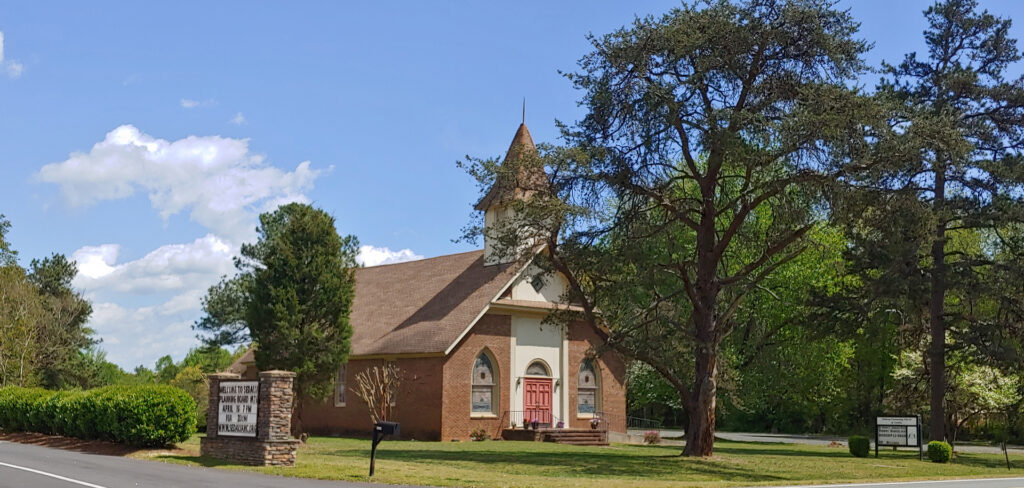HOA Management in Sedalia, NC
William Douglas Management is a leader in customer service — the experience and expertise that your association needs and deserves!
William Douglas Property Management offers HOA Management
Sedalia, NC Facts and Information
The Town of Sedalia is a small municipality in Guilford County. Sedalia was incorporated by the North Carolina General Assembly in August 1997. Sedalia is situated in the Piedmont Triad region of North Carolina in the eastern part of Guilford County. It sits conveniently between Greensboro and Burlington. Sedalia is located off exit #135 on Interstate 85/40. U.S. Highway 70 runs east and west through the southern part of Sedalia, paralleling Interstate 85/40.
Sedalia’s 2019 estimated population per the United States Census was calculated to be 684. From the 2010 United States Census, this was a population growth rate of 9%.
Sedalia’s population per the 2010 United States Census was determined to be 623.
The first Census for Sedalia was the 2000 United States Census and determined the population to be 618.
Per the United States Census Bureau (2015-2019), in 2019 dollars, Sedalia’s median household income was $43,021.
Town motto: “Sedalia: Our Heritage, Our Roots, and Our Future.”
There were 226 households in Sedalia per the United States Census Bureau.
The land area of Sedalia is 2.01 square miles per the 2010 United States Census.
Per the 2010 United States Census, Sedalia’s population per square mile was 342.17.
The coordinates or location of Sedalia per Google Earth – Latitude: 36°04′02.55″N, Longitude: 79°37′14.09″ W
The elevation of Sedalia at the above coordinates or location per Google Earth is 702 feet.
An Overview of Sedalia and Guilford County
Guilford County was formed in 1771 from parts of Rowan County. The county was named in honor of Francis North, Earl of Guilford, father of Frederick North, Lord North, British Prime Minister from 1770 until 1782. The southern one-third of Guilford County was apportioned and formed into Randolph County in 1779. The northern half of Guilford County was appointed and formed into Rockingham County in 1785. Greensboro became the Guilford County seat in 1808, replacing Guilford Court House.
Native Americans have inhabited the Piedmont region of North Carolina for thousands of years, as evidenced by archeological excavations in the region. The first recorded Native Americans encountered in what would become Guilford County were the Cheraw Indians and the Keyauwee Indians. Both these tribes were Siouan-speaking people. The Carolina Native Americans – Census of 1715 estimated the Cheraw people at around 200 members and the Keyauwee people at around 100 members.
Settlers of European descent began arriving in the early 1700s and in large numbers in the mid-1700s. These settlers to the future Guilford County were of original European origin from Pennsylvania, Maryland, and New England. These included American Quakers, British Quarters, German Reformed, German Lutherans, and a large percentage of Scotch-Irish Presbyterians.

One of the most significant American Revolutionary War battles occurred within Guilford County on March 15, 1781, at the Battle of Guilford Court House. This battle was fought in what is now within the city limits of Greensboro. Remarkably, this battle was a British tactical victory, however, it was a British strategic defeat. The Battle of Guilford Court House was actually a British Pyrrhic victory from which they were unable to recover. The Battle of Guilford Court House was not only the turning point of the American Revolutionary War in the south but the turning point for the entire American Revolutionary War.
This was the largest battle to take place during Continental Army Major General Nathanael Greene’s Southern Campaign. Greene’s 4,500-man Patriot force consisted of trained Continental Army soldiers and somewhat trained militia. The British were commanded by Lieutenant General Lord Charles Cornwallis. His force of a 2,100-man was much better trained and equipped than the Patriot force.
Even though Cornwallis’ British force was significantly outnumbered, his force defeated Nathanael Greene’s Patriot forces. While Greene’s forces withdrew from the battlefield and Cornwallis’ controlled the battlefield afterward, the British “victory” came at a considerable cost to their forces. Of the 2,100-man British force, casualties accounted for 25% of the force. One very harsh commentary on what service in the British Army at this time was like is that many of the British casualties were the result of intentional friendly cannon fire. This cannon fire was “grapeshot” ordered directly and purposely by General Cornwallis himself into both British and Patriot troops in an attempt to clear the battlefield, which this accomplished. Charles James Fox, a member of British Parliament and a vocal critic of England’s struggle to quell the American War of Independence, said in reaction to the British “victory” at The Battle of Guilford Court House, “Another such victory would ruin the British Army!”
General Greene reportedly had fewer casualties than Cornwallis, but just as importantly, he succeeded in safely withdrawing his Patriot forces. Greene’s overall strategy was one of hit and run because he knew that his troops were not up to drawn-out engagements with the British. This British “tactical victory” weakened Cornwallis’ forces to such an extent that this ultimately led to the British surrender at Yorktown on October 19, 1781. While only lasting around two hours, the Battle of Guilford Court House changed the world.
While Sedalia was only incorporated as a town in 1997, its history goes back over a hundred years. It can be said the founder of Sedalia was Robert Boston Andrew (1868-1931), who owned a general store in the future Sedalia. In the back of his store, he operated the local U.S. Post Office, making him the local Postmaster. As the Postmaster, he chose “Sedalia” for the name of the community around the turn of the 20th century. Andrew’s general store and post office naturally developed into a community hub because of the merchandise and mail service. Nonetheless, the Sedalia name caught on with the locals.
Dr. Charlotte Hawkins Brown (1883-1961) arrived in the Sedalia settlement in 1901 to teach African American children at the Bethany Institute, a one-room schoolhouse. The Bethany Institute is now known as the Bethany Community Church. In a relatively short time, Dr. Hawkins Brown, an African American and only 18 years old, implemented a great deal of change at the Bethany Institute and within the Sedalia community.
Dr. Hawkins Brown founded the Palmer Memorial Institute in 1902 due to her fund-raising efforts in New England. The Palmer Memorial Institute was a day school, and the boarding school she established in a converted blacksmith shop. The institute was named in honor of Alice Freeman Palmer, which was Hawkins Brown’s mentor and benefactor. The institute curriculum was focused on agricultural and industrial education. The school eventually expanded to a large farm with more than 350 acres. In 1911, she married Edward S. Brown. Unfortunately, their union did not last. Dr. Hawkins Brown was president of the institute for fifty years and saw more than one thousand students graduate by the time she retired. The institute closed in 1961.
The North Carolina General Assembly in 1983 set aside funds to renovate and restore the Palmer Institute to its original state. The Palmer Institute is North Carolina’s first historical site honoring an African American woman. The Charlotte Hawkins Brown Museum is located at the former Historic Palmer Memorial Institute, which is in the heart of Sedalia on Burlington Road/U.S. Highway 70.
Issues arose in the 1970s with development and residents organized to discuss common objectives. The largest concern seemed to be the growth of nearby communities and the wish of the residents of the area to keep the small-town atmosphere. In the 1990s, as communities developed all around Sedalia, there were concerns about forced annexation.

At this time up until 2006, forced annexation was very common within North Carolina. Forced annexation is an annexation by which a municipality unilaterally forces residents of unincorporated areas to reside in their municipality.
In 2006, forced annexation came to an abrupt halt in North Carolina with the ruling from the North Carolina Supreme Court case of Nolan v. City of Marvin. The key decision from the ruling: “The primary purpose of involuntary annexation, as regulated by these statutes, is to promote ‘sound urban development’ through the organized extension of municipal services to fringe geographical areas. These services must provide a meaningful benefit to newly annexed property owners and residents, who are now municipal taxpayers, and must also be extended in a non-discriminatory fashion. Under that definition, forced annexation in N.C. is not achieving its primary purpose. Forced annexation is not used for sound urban development. Municipalities are simply ignoring the areas that need services and annexing those areas that do not need services.”
While there was opposition from a large nearby municipality, North Carolina State Senator Martin introduced the legislation, and the act passed in the 1997 legislative session: S.L. 1997-44, Senate Bill 624. The Town of Sedalia was incorporated in August 1997.
The following places are listed on the National Register of Historic Places in Sedalia: The Dr. Joseph A. McLean House and Palmer Memorial Institute Historic District.
Need Association Management?
Contact Us
How to Start
The Process of Working With Us


REQUEST A PROPOSAL
Request a proposal online or call us directly.


WE WILL REVIEW YOUR CASE
Our team of highly trained professionals will review your case.


RECEIVE A CUSTOM TAILORED PLAN
We will create a customized management plan for your community.


SEAMLESS TRANSITION
We will implement a seamless management transition and integrate our tech.


SIT BACK & RELAX
Enjoy better, affordable and a more reliable, hassle-free management system.




